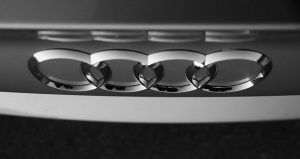Navigating PCP Claims for Vehicle Wear and Tear: A UK Guide
Understanding PCP claims within the UK automotive finance sector is crucial for drivers utilizing Pe…….

Understanding PCP claims within the UK automotive finance sector is crucial for drivers utilizing Personal Contract Purchase (PCP) agreements. The condition of the vehicle at contract end is critical as it must meet 'reasonably to be expected' standards of care and maintenance to avoid excessive wear and tear charges. PCP claimants should be aware that they need to report any damage to their finance company, providing evidence like photographs, with claims being evaluated against the agreed-upon expectations. Maintaining detailed records throughout the term of your PCP agreement is essential for a smooth claims process at the end of the contract. It's important to adhere to the guidelines provided by dealerships and finance companies, as repairs for wear and tear damage, if approved, are typically deducted from the final balloon payment. Specifically, PCP claims UK encompass issues like legal tire tread depths, minor bodywork damage, and slight interior wear, but do not cover neglect or misuse resulting in excessive damage. To navigate the PCP claim process effectively, review your contract's terms, maintain a comprehensive service history, use quality maintenance products, and understand that some providers offer additional coverage for certain types of damage or depreciation. Being proactive and vigilant about managing your PCP agreement can help ensure a more straightforward conclusion to your contract and minimize the risk of disputes.
navigating the complexities of vehicle ownership often includes understanding the nuances of PCP claims in the UK. This article demystifies PCP claims for wear and tear, offering clarity on what’s covered under this financing option. We’ll explore the process of making a claim for damage accumulated during your lease, identify common issues that fall under PCP protection, and provide practical tips to manage your PCP agreement effectively. Whether you’re a seasoned driver or new to PCP contracts, this guide will help you maintain your vehicle and handle wear and tear with confidence.
- Understanding PCP Claims for Vehicle Wear and Tear in the UK
- The Process of Making a PCP Claim for Wear and Tear Damage
- Common Wear and Tear Issues Covered by PCP Claims
- Tips for Managing Your PCP Agreement and Mitigating Wear and Tear Concerns
Understanding PCP Claims for Vehicle Wear and Tear in the UK

When navigating the intricacies of vehicle ownership in the UK, understanding Personal Contract Purchase (PCP) claims for wear and tear becomes crucial. PCP is a popular financing option that allows drivers to purchase a car by paying off the majority of its value over an agreed term, with a guaranteed future value at the end of the contract. This future value determines how much the vehicle will cost at the end of the agreement, and it’s where wear and tear claims come into play.
Under PCP claims for vehicle wear and tear in the UK, drivers are responsible for keeping their cars in a condition that is ‘reasonably to be expected’. This means that fair usage and regular maintenance are expected, and excessive damage or neglect can lead to higher final payments. When the contract term concludes, the car is inspected to assess its value against the guaranteed future value agreed upon at the outset. If the vehicle’s condition meets the ‘fair wear and tear’ standards, the difference between its actual value and the guaranteed future value will be your final payment. It’s essential for PCP claimants to understand these standards to avoid unexpected costs. Dealerships typically provide a schedule of what constitutes fair wear and tear, so it’s advisable to review this documentation thoroughly before signing the contract and at the end of the agreement to ensure you meet these criteria. Understanding the nuances of PCP claims helps UK drivers make informed decisions about their vehicle financing and the subsequent responsibilities for vehicle maintenance.
The Process of Making a PCP Claim for Wear and Tear Damage

When a vehicle under a Personal Contract Purchase (PCP) agreement incurs wear and tear damage, the process of claiming for this through the PCP agreement is a structured one. Car owners with PCP agreements should familiarise themselves with their contract’s terms and conditions to understand what constitutes acceptable wear and tear. This typically includes everyday usage marks that are inevitable over time, such as minor scratches or dents. In the event of damage, the vehicle owner must promptly notify their finance company of the incident. The notification should include a detailed description of the damage along with supporting evidence, like photographs. Upon receiving this information, the finance company will assess the claim. They will determine whether the damage falls under the expected wear and tear or if it is beyond what is considered normal. If the latter is the case, the finance company may authorise repair work, often from an approved list of garages, to rectify the issue. The cost of these repairs is then deducted from the final balloon payment at the end of the contract term. It’s advisable for PCP claimants to adhere strictly to their agreement’s guidelines and maintain thorough records of all communications and evidence of damage to ensure a smooth claims process. For those in the UK, understanding the nuances of PCP claims is crucial, as it can significantly impact the final settlement and any potential penalties upon contract completion.
Common Wear and Tear Issues Covered by PCP Claims

When navigating Personal Contract Purchase (PCP) agreements in the UK, understanding what wear and tear is typically covered under a PCP claim can be pivotal for vehicle owners. Common wear and tear issues that are generally accounted for within these claims include tire tread depth, which should meet legal standards, ensuring the tires’ safety and longevity. Another frequent concern is the vehicle’s bodywork, with minor dents, scratches, or chips that do not compromise the structural integrity or paintwork of the car often being eligible for coverage under PCP claims UK. Additionally, interior wear such as upholstery wear and tear, minor rips or tears, and typical signs of use like slight fading on trim are typically addressed within these claims. It’s important to note that while PCP claims are designed to cover predictable issues, excessive damage beyond normal usage or neglect is generally not included in the agreement. Vehicle owners should refer to their specific PCP agreement terms for a detailed understanding of what is covered under wear and tear within their policy.
Tips for Managing Your PCP Agreement and Mitigating Wear and Tear Concerns

Navigating a Personal Contract Purchase (PCP) agreement requires careful management to ensure that you mitigate wear and tear issues when returning your vehicle at the end of the contract term. To maintain your vehicle effectively within the confines of a PCP plan, it’s advisable to adhere to regular servicing schedules as outlined by the manufacturer. This proactive approach not only ensures your vehicle operates efficiently but also provides a clear service history that can be beneficial when the time comes to hand back the keys. Additionally, consider using high-quality products for cleaning and maintenance, which can protect against premature wear and help preserve the vehicle’s condition. Keeping detailed records of all maintenance and repairs is another prudent step; these documents can substantiate the vehicle’s condition and support any claims you may submit if there are disputes regarding excess wear and tear upon return. Understanding the terms of your PCP agreement, including the guidelines for acceptable wear and tear, is crucial. This knowledge allows you to manage your responsibilities effectively and avoid potential additional charges at the end of the contract. It’s also wise to review the small print of your PCP claims UK policy, as some providers may offer protection against certain types of damage or depreciation, which can alleviate concerns about wear and tear when you come to make a return. By being vigilant and proactive in managing your PCP agreement, you can minimise the potential for disputes and ensure a smoother end-of-contract experience.
In conclusion, navigating PCP Claims for vehicle wear and tear in the UK can be a straightforward process with the right understanding and management strategies. This article has demystified the common issues covered by these claims, offering clear guidance on how to make a PCP claim should your vehicle sustain typical age-related damage during the lease term. By adhering to the advice provided, motorists can effectively manage their PCP agreements, minimise potential wear and tear concerns, and ensure they are prepared for any necessary claims. Remember that understanding your PCP claim’s terms and conditions is key to a hassle-free experience. For comprehensive information on PCP Claims and how they apply to vehicle wear and tear in the UK, always refer to the agreement documentation or consult with a professional.







